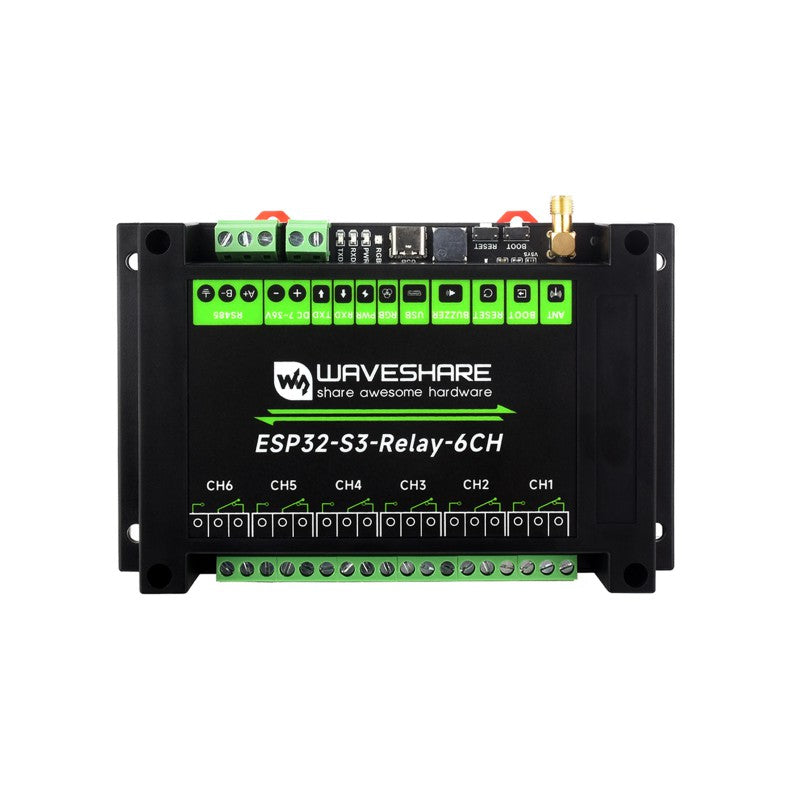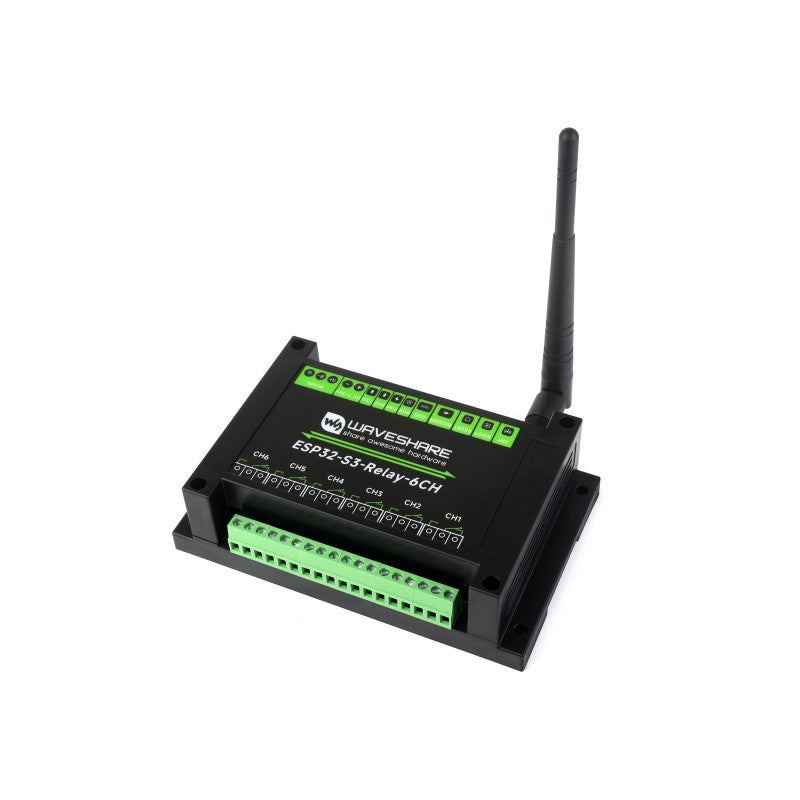Features and characteristics of the ESP32 chip family
The ESP32 is a „System on a Chip" (SoC). The most important components of a computer such as CPU cores, main memory, ROM (bootloader), network functions and interfaces are housed on a single, tiny chip. The name ESP32 now covers a whole family of SoCs with different technical specifications. The chips are cost-effective and have low energy requirements. They are available with one or two processor cores of different types. For example, the ESP32 chip is available with Xtensa 32-bit LX7 or RISC-V processors and other processor types in single and dual-core versions. The ESP32 dimensions are compact and, depending on the SoC type, are only 5 x 5 or 7 x 7 millimetres, for example.
Espressif offers the ESP32 as so-called WROOM or WROVER modules to avoid having to work with the ESP32 SMD chip itself and to keep the circuit complexity within limits. These extended modules also have compact dimensions (e.g. 18 x 20 x 3 millimetres) and are available in different model variants. They usually have a flash memory of four to 16 megabytes, additional memory in the form of PSRAM (e.g. four or eight megabytes), a crystal oscillator, a PCB antenna or a connection option for an external antenna and other components required for a functional overall system. Development boards equipped with an ESP32 WROOM or WROVER module can be used for hardware development. The ESP32 development boards make it easy to use the functions of the ESP32 module. They are optimised for specific applications and equipped with the required components and interfaces such as Ethernet or USB.
Wide range of programming options for the ESP32 microcontroller
In terms of programming, the ESP32 microcontroller is extremely versatile. For development work with the ESP32, Espressif provides a complete development framework under the Apache 2.0 license and individual specialised development environments. The ESP32 controller can also be programmed in the Arduino development environment. Projects with the ESP32 controller can also be realised using the Eclipse IDE. Development platforms for numerous other manufacturers can also be used. The ESP32 processor supports C/C++, MicroPython, CircuitPython, Lua, JavaScript, Ruby, Rust and other programming languages. The operating systems that can be used include NodeMCU, Lua RTOS or FreeRTOS. Basic functions from the field of artificial intelligence (AI) and machine learning are also covered. The ESP32 can be supplied with software and programmes via the USB interface or over-the-air via the WiFi interface, for example.
The most important features and advantages of the ESP32 controller family briefly summarised
- Available with various single-core and dual-core processors
- Processor clocking up to 240 MHz
- Co-processor with low power consumption for specific tasks in addition to the ESP32 processor
- Integrated memory and ROM (bootloader), support for external memory
- Flash memory up to 16 MB
- integrated WiFi (802.11b/g/n) with up to 150 Mbit/s
- Support for WEP, WPA/WPA2 and PSK/Enterprise
- Support for protocols such as Thread, Matter and Zigbee
- Integrated Bluetooth 4.2 and Bluetooth Low Energy (BLE)
- PCB antenna and connection option for external antenna
- Wide range of interfaces such as UARTs, SPI, CAN and I2C interfaces
- Integrated real-time clock
- Integrated analogue-to-digital and digital-to-analogue converters
- Programmable inputs and outputs
- integrated sensors (e.g. Hall sensor and touch sensor)
- integrated cryptographic unit for hardware acceleration of encryption methods such as AES, SHA2 or RSA
- Ethernet interface via the Media Independent Interface (MII)
- Support for Power over Ethernet (PoE)
- Tiny size
- Inexpensive
- Low power consumption and deep sleep mode
- Robust and suitable for harsh environments (operating temperatures from -40 °C to +125 °C)
- Support for numerous development environments, programming languages and real-time operating systems
- Compatible with the Arduino IDE
- available on ready-made developer boards with ESP32 WROOM or WROVER modules
Typical application areas of the ESP32 microcontroller
The ESP32 controller is suitable for a wide range of different applications. Due to its low price, compact dimensions, diverse wireless and wired networking options and low energy consumption, it is predestined for the Internet of Things (IoT). It can be used to realise intelligent IoT devices and IoT products. The ESP32 chip can be used for rapid prototyping and enables the creation of actuator-sensor networks. It can be used for embedded systems in industrial automation, in the smart home sector, for wearables, in the healthcare sector, for recording environmental measurement data, in security technology and for much more. Educational and research institutions also like to use the ESP32 controller for their projects. Due to its popularity and performance, the ESP32 chip can now be found in numerous devices such as weather stations, surveillance cameras, barcode readers, smartwatches, fitness trackers and many more.
The selection of ESP32 products in our shop
In our shop you will find a large selection of ESP32 chips, modules and developer boards. Both individual modules such as the Espressif ESP32 ESP-WROOM-32D and developer boards equipped with WROOM or WROVER modules are available in various designs. The range extends from miniaturised versions with USB-C connection to developer boards with Ethernet port and PoE support to developer boards with external antenna or LCD touchscreen and camera. Development boards with speakers and stereo microphones are available for audio applications. Browse through our shop and find the right ESP32 product for your application!


